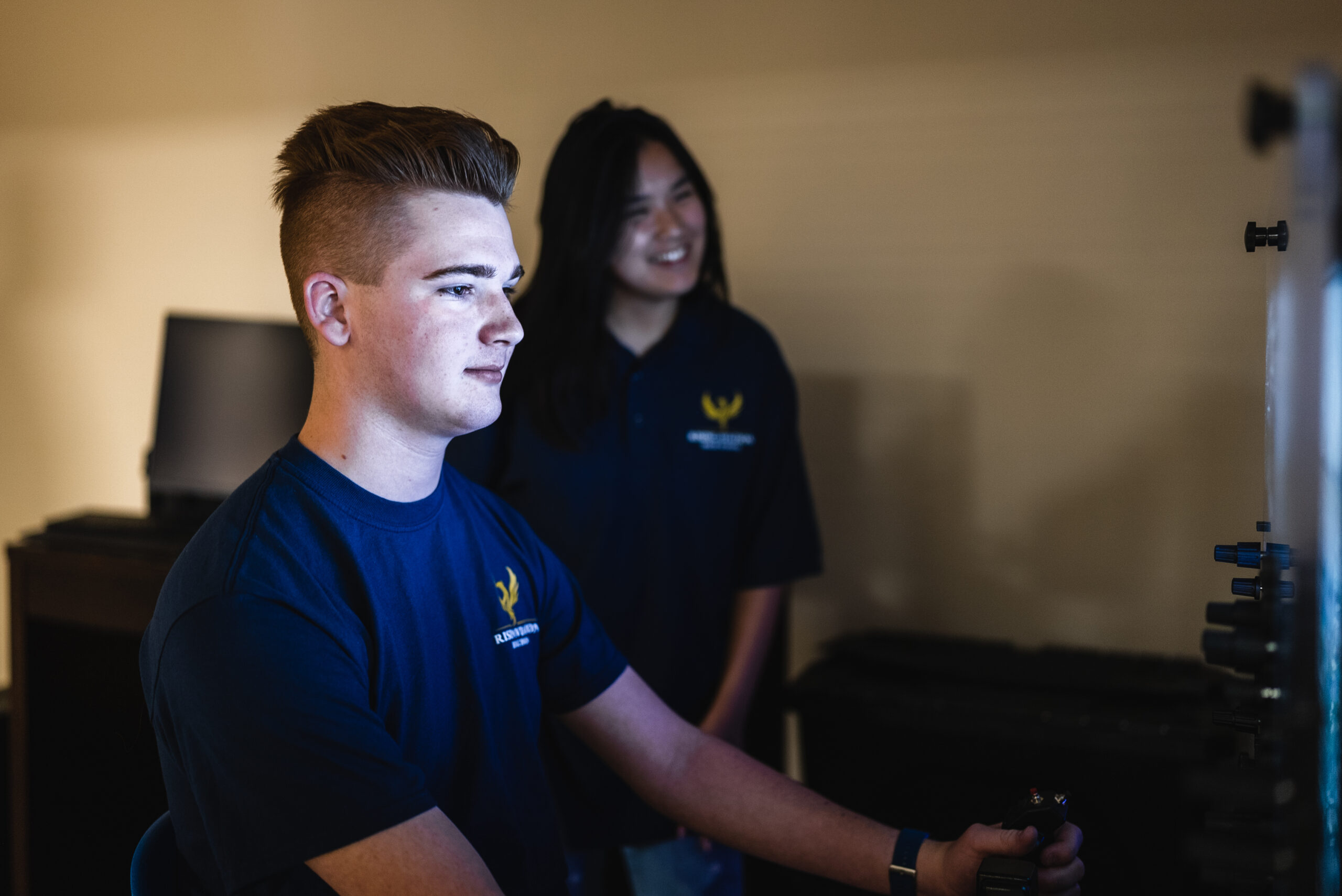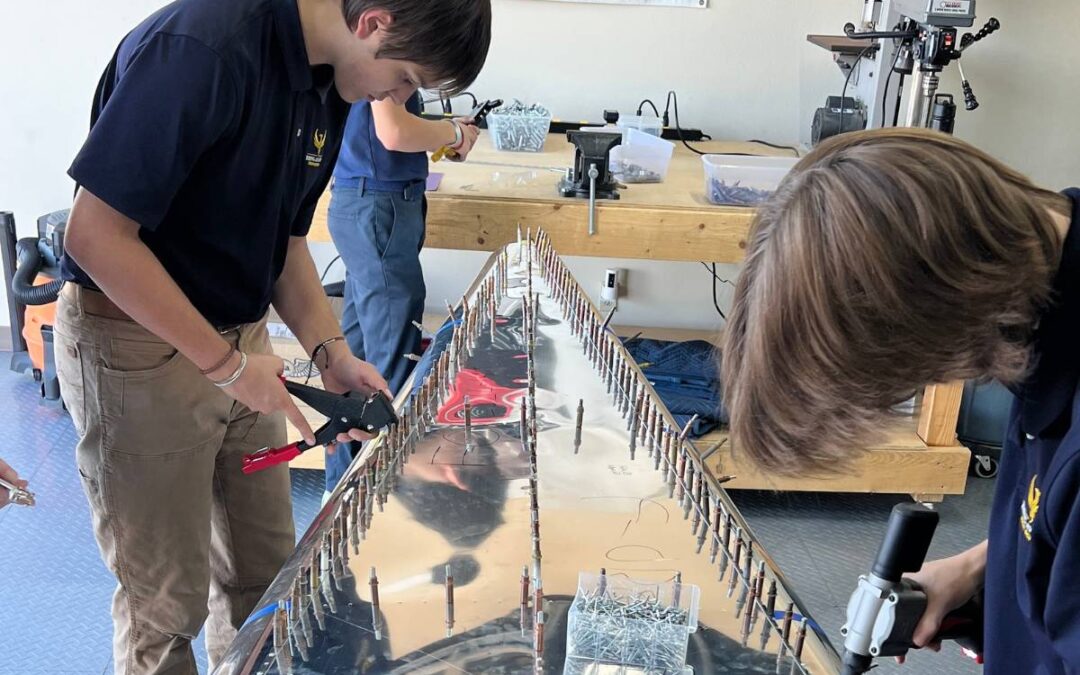The tricky thing is that a good STEM education is about much more than just taking more classes in these four subject areas.
A well-tailored STEM curriculum connects these subjects and offers surprising benefits for students. Here’s a look at ten unexpected and positive benefits of a STEM education.
Why is a STEM education beneficial?
In today’s ever-changing world, it’s more important than ever for students to get a solid foundation in science, technology, engineering, and math.
In fact, many of the technological or scientific advances we enjoy today were brought about because of an increased focus on STEM education. Here are some of the biggest benefits of having a core curriculum based on these disciplines:
1. More Hands-On, Engaging Curriculums
STEM embraces bringing real-world issues and problems into the classroom.
This inspires curiosity and enables students to dig into the weeds a little and get their hands dirty—to explore issues and come up with ideas and solutions independently.
2. Teaches Teamwork and Project Management Skills
A lot of STEM classwork involves teamwork. This focus on the importance of collaboration builds it as a lifelong skill.
Working in a team is required in nearly every profession, and it’s one of those high-value ‘soft skills’ employers are constantly looking for.
The ability to actively listen to a teammate’s suggestions and ideas and to appreciate diverse ways of thinking cannot be underestimated. These interpersonal skills will serve the student throughout their lifetime.
Not only do STEM classes involve teamwork, but they often involve conceptualizing a project from start to finish. This is the groundwork for project management, a skill set that every self-motivated worker needs to have.
3. Better Problem Solving and Critical Thinking Skills
Teamwork and hands-on learning foster more creativity and ingenuity. This building of cognitive skills happens more quickly than it does in traditional curriculums.
One reason is that student engagement and interest in the subject matter are much higher with a well-designed STEM program.
By encouraging our students to come up with and test their own solutions, STEM classes help foster innovative thinking. And innovation is a core component of the modern world.
STEM classes are about much more than memorizing facts and figures from the textbook.
Instead, students are challenged to dream up new solutions and test them out. Instead of providing the answers, STEM programs pose questions that demand students to think deeply and apply scientific analysis.

4. Improves Communication Skills
Working in groups, thinking critically about problems, and then reporting your findings all require higher real-world communication skills.
High-level written, verbal, and non-verbal communication skills are all must-have skills for any 21st-century worker.
5. Higher Media and Scientific Literacy
By focusing on real-world challenges, scientific principles, and problem-solving, STEM students naturally develop a high level of both media and scientific literacy.
Media literacy is the ability to critically analyze and parse various sources of information and extract relevant details. It requires the ability to identify possibly biased information and gauge how accurate or credible the information may or may not be.
Scientific literacy comes from a well-rounded knowledge of science and the scientific method.
No other type of education teaches scientific literacy as well as a STEM program.
By integrating the scientific principle into every subject and everyday life, students will understand how to evaluate multiple resources and make better decisions. This can benefit them in every area of their lives, from personal to professional.
6. Learn About the Latest Technologies
STEM exposes students to the latest trends in science and technology.
It is not only part of the classwork but also a natural progression of a STEM curriculum. While looking beyond the classroom walls and discussing real-world problems, technologies that offer real-world solutions are explored.

7. Teaches You to Take the Initiative and Accept Failures
Working with the scientific method on a daily basis and from a wide range of applications teaches students how it works in the real world.
Students will get used to testing their own theories and hypotheses and accepting when new information means they may have to readdress their earlier ideas.
Throughout a STEM education, students can build the confidence to take the initiative independently when they identify ideas worth pursuing.
8. Sample Career Opportunities in a Variety of Fields
With more time spent on interesting STEM subjects, students will find niches that interest them.
Having a variety of interests is key for students going into college.
It helps students pick the majors they want to study and answer the important questions, such as, “What do you want to be when you grow up?”
9. Prepares You For College Majors and In-Demand Careers
With the foundational knowledge that a STEM program builds, students can leave high school ready to succeed in the major of their choice.
And, of course, success in college means a great chance of landing a dream career thereafter.
STEM is also a pathway to a career in a STEM field, which are some of the most in-demand and highest-paying jobs today.
It’s estimated that STEM job growth will be ten percent or more in some sectors in the coming decades, and there’s already a shortage of qualified workers to fill these jobs.
10. STEM Classes are More Fun and Engaging
Last but not least, STEM classes are fun!
Students study important issues and engage with hands-on learning in the classroom. They focus on things that interest them and on subjects that apply to their future careers.
STEM is about more than Science, Technology, Engineering, and Math—it’s about the future.
Get a Private High School STEAM Education in Texas
At Rising Aviation High School, we take STEM education one step further. We make it STEAM: Science, Technology, Engineering, Aviation, Mathematics. With a solid core curriculum based on all the STEM disciplines, students at our private high school in Addison, TX can also take Aviation electives to fully prepare them for an aviation career.
Imagine having a childhood dream of becoming a pilot and being able to make that dream come true while still in high school! From hands-on flight experience and Aircraft Charter Management to a Fixed Wing Pilot’s License or a Remote Pilot’s License, it’s all possible with Rising Aviation.
As a STEM accredited school, we have what it takes to prepare today’s youth for a variety of future careers, especially since the skills acquired through a STEM education can apply to many occupations.
Admittedly, however, we are partial to careers in aviation. That’s exactly why our Addison, TX campus is located at Addison Airport (KADS) while our newest location (coming soon) will be located at Dallas Executive Airport (KRBD).
If you have a teen interested in an aviation career or a private STEM education in the Addison or Dallas, TX area, contact us today to explore our academic and aviation programs.






